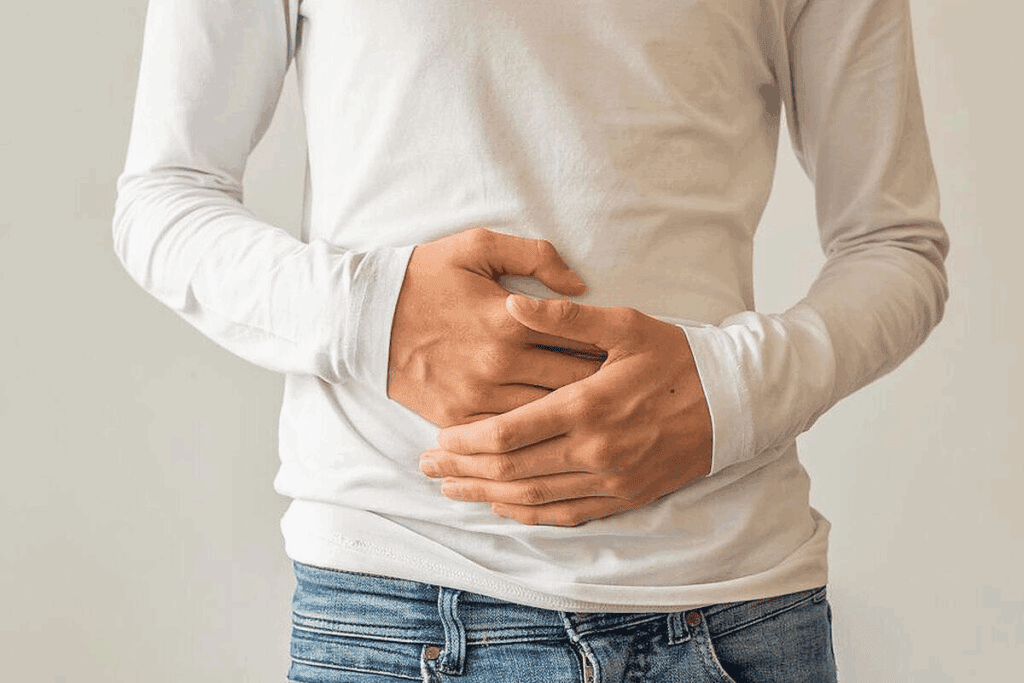Last Updated on November 26, 2025 by Bilal Hasdemir

The gallbladder is a pear-shaped organ found under the liver. It’s key for digestion. It holds bile, a digestive fluid made by the liver. This fluid helps break down fats and absorb important vitamins.
Knowing how the gallbladder real functions is important for a healthy gut. It makes bile more concentrated, helping enzymes digest fats better. This is key for staying healthy, and problems with the gallbladder can cause digestive issues.

The gallbladder is key in digestion, storing bile from the liver. It’s shaped like a pear and sits under the liver. It connects to the liver and intestines through the biliary system.
The gallbladder’s spot is important for its job. It’s in a special area under the liver’s right lobe. This spot helps it store and release bile into the intestines for fat digestion.
The gallbladder links to the liver through the cystic duct. This duct joins with the hepatic duct to form the common bile duct. Then, it merges with the pancreatic duct to empty into the small intestine, helping with nutrient absorption.
The biliary system includes the liver, gallbladder, and bile ducts. It’s vital for bile production, storage, and transport. The liver makes bile, which the gallbladder stores and concentrates.
When food hits the duodenum, the gallbladder releases bile into the common bile duct. This helps digest fats. The biliary system must work well for the gallbladder and digestion to function right. Problems here can cause gallstones or cholecystitis, showing how critical it is to keep the system healthy.

Bile is a fluid made by the liver and stored in the gallbladder. It’s key for breaking down fats in our food. This helps us digest and absorb fats and vitamins A, D, E, and K.
Bile salts turn fats into smaller pieces. This makes fats easier for enzymes to digest. The emulsification process is vital because it lets enzymes like lipase work better.
Bile is very important for fat digestion. It does several things:
Bile starts in the liver, where hepatocytes make bile salts. These salts are then stored in the gallbladder. When we eat, the gallbladder releases bile into the bile ducts.
The release of bile is carefully controlled. Hormones and the presence of food in the stomach play a role. This shows how complex fat digestion is and how important the gallbladder is.
The gallbladder is key in helping our body absorb important nutrients. It stores and releases bile, which breaks down fats. This is essential for getting vitamins A, D, E, and K from our food.
When the gallbladder doesn’t work right, like with gallstones, we can’t absorb these nutrients well. This shows how important it is to keep our gallbladder healthy. We can do this with the right diet and sometimes medical help.
Eating a diet full of nutrients helps our gallbladder work better. Foods high in fiber and low in bad fats are good for it. Taking care of our gallbladder helps our body digest food better and absorb the nutrients it needs.
The gallbladder stores bile from the liver. It releases this bile into the intestines to help with digestion.
The gallbladder sends bile into the intestines. There, it breaks down fats into smaller pieces. This makes it easier for enzymes to digest them.
Bile salts mix with fats, making them easier for enzymes to break down. This is key for absorbing fats and fat-soluble vitamins.
If the gallbladder doesn’t work right, like with gallstones, it can’t absorb fat-soluble vitamins well. This includes vitamins A, D, E, and K.
The biliary system is a network of ducts. It connects the liver, gallbladder, and intestines. It’s important for storing and releasing bile for digestion.
The gallbladder sits under the liver. It’s linked to the liver and intestines through the biliary tract. This network helps bile flow.
When it contracts, the gallbladder releases bile into the bile ducts. Then, the bile ducts empty into the intestines. This helps with fat digestion and nutrient absorption.
Subscribe to our e-newsletter to stay informed about the latest innovations in the world of health and exclusive offers!